Family Wellness: Mental Health And Art Therapy
September 15, 2020

Source: pixabay.com
We pursue creative hobbies like painting, writing, drawing, dancing, or acting merely because we love doing them. Instinctively, we do know that practicing creativity is healthy for us and our creative desires give us joy and fulfillment. But can we benefit mentally and emotionally from being creative? Indeed, art therapy makes us feel unburdened and happy at the end of the day, but what are other benefits that we can get from it? Can creativity in counseling help improve family wellness?
Often, people do creative activities as a form of recreation, while others do it as a livelihood. No matter which path you have taken to release your imaginations and your need to express your self-kempt emotions, it’s quite obvious that creating things is part of being human. We’ve been using art for centuries, owing from the vague marks of the hands and rough drawings of images on caves. We could say that our desire to use art is inherent. We had benefited from art over the years when we learned to make houses, cook food, draw blueprints, and even formulate medicines.
At times, however, we make things just to make it. Does this mean that sometimes art is useless? Regardless of this theory, several studies, particularly in the medical arena, have shown that almost all kinds of art forms are, in fact, beneficial for one’s physical, emotional, and mental health.
Below is a list of proven benefits that creative pursuits – dancing, drawing, writing, etc. – can provide us with. We strongly recommend that you incorporate creativity into your life as well.
Positive Impact On The Brain
Writing in the form of poetry or simply journaling can effectively help a person learn and memorize. But not if you intentionally type or write down the concepts that you want to recall – now, that won’t work. If learning efficiently is your purpose, experts suggest that you do it conventionally by using pen and paper. You can also consider doing family DIY projects for mental health.
Additionally, writing music also promotes better brain function. If Albert Einstein had not been a genius physicist, he confessed that he would have become a great musician. This is further proven to be true by a study done in 2014 about participants who had musical training, like those who practiced using a musical instrument. At the end of the study, a majority of the participants who played instruments had increased connectivity between the two cerebral hemispheres.
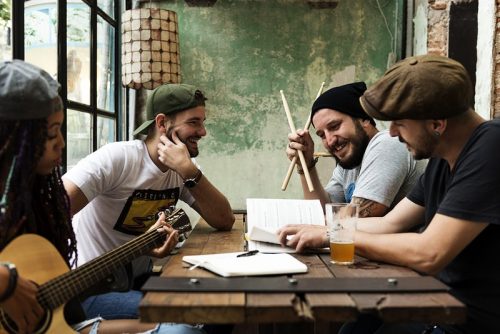
Source: rawpixel.com
Enhanced Mental Well-Being
Science has time and again revealed that painting, drawing, and clay work is tools that can be used for individuals that experienced trauma. An article also described art as something that aids people in expressing how they feel about their encounters that are too hard to explain verbally. It also stated that self-expression might probably even help maintain or create a positive identity.
Expressive writing, on the other hand, which involves individuals to recount a situation and discuss how it has impacted their lives, has been shown to help those who have been traumatized and have enabled them to deal with their negative emotions. Like visual expression, this form of writing gives people the ability to take unpleasant situations that are difficult to alter and incorporate them into the story of their life, which eventually creates meaning for experiences that have left deep-seated scars. Examples of these are the loss of a loved one, sexual abuse, or a medical diagnosis.
Benefits To Physical Wellness
People who have jotted down their traumatic encounters have exhibited substantial improvements in different measures of physical wellness, a decrease in doctors’ appointments, and improved immune system functions. This was supported by a trial that entailed participants going through HIV treatment, which showed that expressive writing aided the participants in improving their immune systems.
The reason for this is not very clear, but those who reported their experiences regularly presented with a boosted CD4+ lymphocyte count.
Music Therapy
This is also another immune system booster. Music impacts our brains in complicated ways, activating the limbic system, and soothing one’s responses to stress. Experts Nobel and Stuckey state that listening to your favorite music may help regain one’s immune system functions partly through the hypothalamus and the amygdala, regions of the brain that are for hormonal and mood regulation.
Benefits of Dancing
Creativity could also be a mobile pursuit, the kind of mobility that provides its range of benefits. For example, a trial that focused on breast cancer survivors revealed that dancing helped promote better shoulder stability and function and positively affected their self-image. Also, dancing is an enjoyable means of keeping yourself fit and healthy.

Source: rawpixel.com
Studies on Zumba and hip-hop programs, improving one’s blood pressure and other vital signs, have encouraged many men and women to continue dancing as a form of keeping themselves physically and mentally fit.
Ultimately, if we can maintain or improve our physical and mental states by painting, journaling, playing the piano or guitar, or just dancing our problems away, then why not welcome more creativity and art into our lives?
How To Manage Coronavirus Hysteria
June 22, 2020
In this pandemic spread of COVID-19, there are two kinds of fear you can see in people. One is the fear of getting sick. People understand the virus’s capability in damaging a person’s overall health. That is why they are afraid they might end up getting the diseases. There is also the fear of infecting someone they love because they do not like the idea of hospital pain and death. Second, there is the fear of financial instability and loss. Honestly, with the situation right now, that ends up being a more significant threat to people. But unfortunately, that only takes a small percentage.

Source: pexels.com
What people are dealing with right now that they cannot seem to notice is the emotional and mental problems. They assume that it is okay to feel bored, lonely, and isolated during this situation. They say they understand the purpose of social distancing, but the truth is, most cannot handle it anymore. Most of them want to be around people. So to manage this Coronavirus hysteria, here are some suggestions on what people can do.

Source: pexels.com
Establish Things You Can Control
First, people should accept that there are a lot of things they can’t control during this pandemic. As much as they want to believe that they can find better ways to deal in life, some will not sacrifice anything and make some adjustments. So in line with this, people must focus on establishing control over the things they can and not dwell on those things they cannot. An example of that is choosing the best way to keep themselves safe and away from the virus. People can simply wash their hands and avoid touching their faces. Honestly, these are natural things that people should never hyper-focus on, but regularly doing it is beneficial for everybody at this moment.
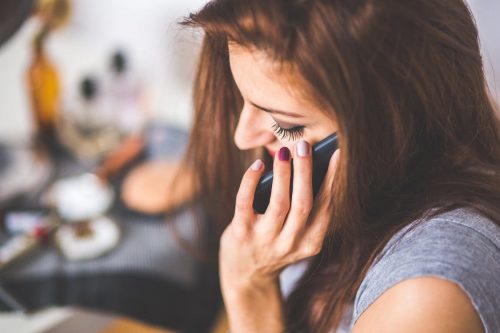
Source: pexels.com
Connect More With People
Humans are born interactive; that is why they are socially oriented. But since there is a social distancing protocol, they have to limit their connection with other people. Unfortunately, it causes sadness and loneliness. People should try to connect with others in creative ways to fight with the mental stress of physical distancing. With that, social media plays a big part. People can spend time with friends and family through chat, text messaging, and video calls. Honestly, with technology at the tip of everyone’s finger, they can easily manage social boredom.

Source: pexels.com
Keep A More Structured Day
Some people are okay with the idea of working from home. However, there are those people who lack the emotional and mental strength to deal with work separation. Some of them feel there is no reason for living without their list of things to do. If this is the case, it is better that people should go with the motion of setting up a start and stop time for their entire daily tasks. If it is possible, people should consider making an effort to separate their work and personal space. They should understand that even though being busy serves as a great distraction from the pandemic anxiety, it is still essential that they spend time doing nothing from time to time.
There are a lot of uncertainties during this pandemic. So it is vital that people must take care of themselves no matter what. The struggle is not easy, and the adjustments people will make may not be suitable for others. However, keeping the mental and emotional state can be advantageous is a lot of ways. People should not over-focus on things that don’t entirely matter and pay attention to those things that require necessary actions.
How Social Distancing Strains Our Mental Health
May 5, 2020
Things get pretty stressful now that the world experiences a crisis. In times like this, where the global health issue is about the Coronavirus, social distancing becomes entirely essential. It is the only available strategy that helps flatten the curve and slows down the spread of the virus. However, if we are not careful, our only chance of not getting infected can also take a toll on our mental health. With that, let us try to understand how social distancing can be dangerous to our mental stability and know how we can help ourselves in managing it.
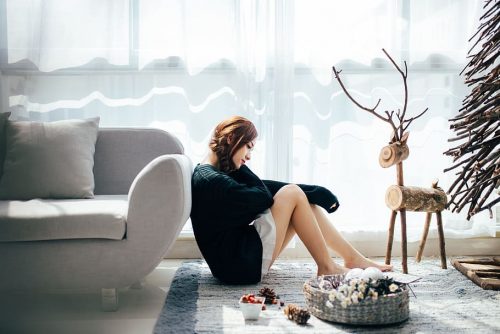
Source: wallpaperflare.com
It Promotes Loneliness And Sadness
The combination of social distancing and anxiety can cause a negative effect. That is if we suffer from a pre-existing mental illness. Practicing social distancing for an extended period can influence the adverse impact of social isolation, precisely our feeling of sadness or loneliness. Sadness and loneliness are known not only in increasing different levels of depression and anxiety; it can also lead to a decrease in our immune system’s function. So to avoid loneliness and sadness, we have to make use of the available outlets. We must digitally check-in with friends and family so we can keep ourselves emotionally and mentally connected with people despite the social distancing protocol. We can send a text, start a video chat, or make a phone call. Any means are okay as long as we keep connected.

Source: wallpaperflare.com
It Causes Boredom
The boredom caused by social distancing affects mental health in an unnoticeable way. That is due to the limited amount of ideas of what we can do each day. And ever since the social distancing protocol started, all of us feel that days and nights begin to feel more prolonged than usual. It promotes the lack of sufficient engagement with our surroundings, which makes us feel irritated and annoyed all the time. It adds to our stress because we somehow think we are locked up in a situation we cannot control. That explains why even if we already completed some of the tasks we listed, we still get bored. To fight boredom, we need to come up with new ideas and hobbies. There are a lot of things we can do, such as reading, writing, dancing, and learning new things. Anything that can keep our minds stimulated is an excellent way to reduce boredom.
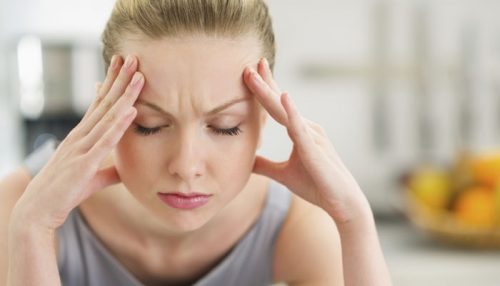
Source: pxfuel.com
Its Uncertainty Brings Stress And Panic
Social distancing is the one responsible for our interrupted routines. It limits us from doing certain things because of the idea of not getting infected. However, for some of us, it adds to stress and panic due to its uncertainties. These include the difficulty of our job and financial status. A lot of us are struggling to make ends meet even before this outbreak. And now that there’s a strict requirement for social distancing, the fear of not being able to work and support our family is draining our mental health. That is the reason why we feel a lot of unexplained emotional and psychological burden. To cope with this, we must engage and establish a new routine we can adapt at home. Yes, it might take us a while to get used to the new set of habits. But it will soon help us become more focused on being grounded and productive.
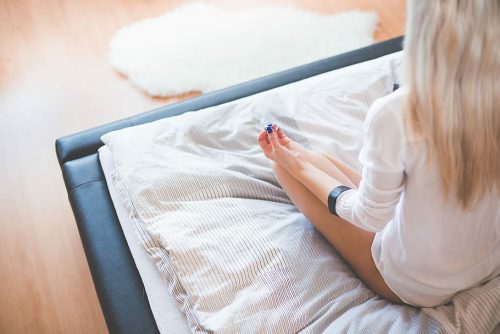
Source: wallpaperflare.com
It is undoubtedly the most stressful time for all of us. But we have to recognize that in a pandemic time like this, practicing self-care is crucial. We need to acknowledge that we are more susceptible to different kinds of stress right now, and the only way we can stay positive is by keeping our mental health better. An easy and convenient way to do this is by subscribing to an online therapist from BetterHelp. With just a click of the app from your smartphone, you are able to connect with a professional counselor who is trained in tackling various mental health conditions, including stress and anxiety. Check out some of the clients’ reviews here to have a clearer perspective of how it works. Good luck!
Protected: Acceptance Is The Key
March 31, 2020
What Are The Types Of Anxiety Disorders?
December 13, 2019
Are you aware that there are several kinds of anxiety disorders? In this article, we are going to present to you these various classifications as well as a short description of each type. We believe that knowing these matters can help you become more sensitive to people with anxiety. “Many people believe that anxiety isn’t something worth assessing,” psychiatrist Dr. Allison Baker says. “But it’s important to treat anxiety, especially in children and teens. If untreated, it can be associated with an increased risk of depression.”
If you are the one who has this type of disorder, then make sure to read the rest of this article so that you will know how to deal with your anxiety in the best manner possible:

Source: pixabay.com
Art Can Heal Broken Hearts
December 6, 2019
Art can heal a broken heart. Experiencing emotional anguish that stems from an individual’s actions often results in lingering desolation and sadness. Amid this emotional strife, the afflicted tend to indulge in detrimental coping mechanisms, such as excessive drinking, prolonged self-isolation, or impulsive shopping to numb the pain. The endeavor to mend a strained relationship is no mean feat, as the intricacies of human emotions and bonds present numerous challenges.
Embarking on a path to recovery after a shattered connection necessitates dedication, patience, and a steadfast commitment to self-development. One’s therapeutic journey could entail a reassessment of personal values, a rediscovery of passions, and the creation of more robust emotional boundaries. Both time and effort are essential components in rediscovering stability and a renewed sense of self-worth in the aftermath of unfortunate events.
The emotional rebuilding process is unique for each individual, and understanding that milestones in recovery may vary greatly is of vital importance. Embracing optimism, practicing self-compassion, and fostering a support network to assist during this trying phase make the adventure of life worth pursuing, all while reducing the risk of falling prey to despair.
Art Can Heal A Broken Heart
When a loved one hurts you, some loneliness and misery lingers, often for quite some time. When you are sad, you usually turn to drinking, staying in the room for hours, or crazy shopping. It’s not easy to heal a damaged relationship. Going through the process of recovery from a breakup can take time. You will have to exert much effort to feel that your life is giving you enough reasons not to give up. But art can heal a broken heart.
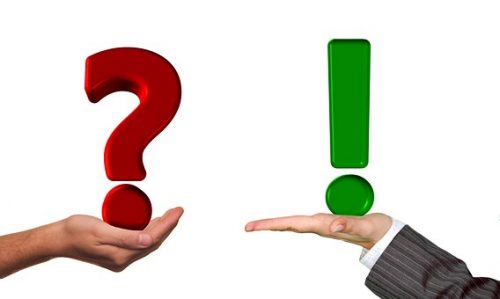
Source: pixabay.com
Keeping The Emotional And Psychological Aspects Healthy
Though some circumstances are surprisingly hard to fix and adjustments are not that easy to handle, you can always find a better way of keeping your emotional and psychological aspects as healthy as possible as well as improve your cognitive state. So how can you fight stress and depression after ending an example of a toxic relationship? But there are more positive ways to heal and deal with heartache.
Discover The Role Of Emotional And Mental Healing: Exploring Its Significance In The Recovery Process
Art making can be a good source of mental enhancement because it reaches the part of our brain that allows us to maximize its use to contribute to our overall well–being. Art can heal a broken heart because art creates a connection between our psychological, behavioral, physical, and emotional states. Also, the notion that art can heal a broken heart supports our personality development because it helps in the series of quality decision-making, responsible self–evaluation, self-esteem, and problem–solving. It allows relaxed overall well-being.
Investigating The Potential For Arts To Repair Emotional Wounds
“The patient uses and makes art to convey their feelings at that moment or relating to experience or past situation,” Wayne Jonas, M.D., says. He explains further, “When people are experiencing intense, complex, or confusing emotions, the use of art in a therapeutic setting can help them learn about, manage, and communicate their feelings in ways that language cannot always accomplish.”
How Art Can Heal A Broken Heart – How Does Art Heal Mental Illness Like Depression?
The process of broken heart art therapy helps us alter our perspectives, where we tend to create plausible responses applicable in certain nerve-racking broken-hearted situations, turning our pain into a work of art. The creative process can heal our imagination and creativity, which are beneficial in attaining developmental growth. In fact, working on art gives us boosting brain energy to fight stress and anxiety.
According to Cathy Malchiodi, Ph.D., LPCC, LPAT, ATR-BC, REAT, “Art expression often becomes a pathway for transforming feelings and perceptions into a new life story and, as a result, creating a new sense of self.”
Depicting Feelings And Assisting Individuals In Swift Recovery
In line with that, create art and seeing a visual representation of what we’re going through and applying physical skills in showing our ideas and emotions is a better way of developing stronger and healthier well-being. Art therapy gives us a space to allow difficult emotional issues to formulate their solutions in our brains to be able to keep us safe from distractions and possible mental health conditions. It also can help resolve conflicts and draw the community together.
The Significance Of Arts In Healing A Broken Soul
Art matters because it represents a different view of many artists’ struggles in life. Art makes us believe that our existence matters and that we have a connection with health and nature — a beautiful spirit. Art somehow helps in creating positive solutions to our current damaged psychological and emotional state that can affect our behavioral aspects as well.
Harnessing The Power Of Art Expression: Enhancing Life, Inspiration, & Personal Growth Through Art Engagement
In fact, when we let the art group talk for us, we appreciate life along with the inspiration art gives us. We somehow learn to value the things we no longer have control with and see ourselves as individuals who can work with imagination and focus. It also applies to helping social skills, emotional resilience, and other side or aspects for kids.
Learn To Express What You Are Feeling With Art
Art is a form of self-expression, and when we are in a state of depression, drawing, painting, writing, making music, or molding something out of our deep thoughts can be amazing. Sometimes, we even have the freedom to create a masterpiece from different ideas and tend to incorporate our emotions into the piece we are trying to present. This art process reminds the artist to feel happy, satisfied, contented, and aware of themselves, and it creates a massive contribution to keeping our hope, peace, joy, and overall mental state intact.
Explore Other Therapy Ways That Heal Your Emotional Struggle
“No matter when or where the artwork is created (or appreciated), we should keep in mind that art always tells a story,” Arthur P. Shimamura, Ph.D., professor emeritus of Psychology at the University of California, wrote. “That story may be intended for us to be taken by its beauty, but it may instead force us to elicit other feelings, such as anger, surprise, or disgust.”
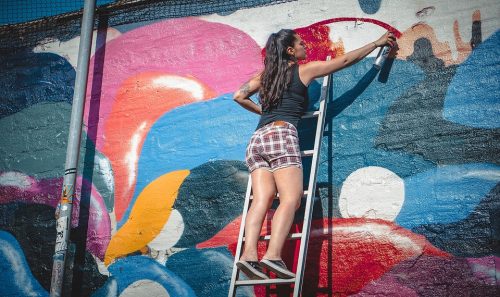
Source: pixabay.com
Depression and all types of mental illness are inevitable at some point in our lives (even for children). However, when we try to learn to appreciate doing things that can make us healed and happy, perhaps all those mental conditions won’t be available.
Things You Should Always Remember When Dealing With Broken Heart
However, if you or a friend is still subject to these unpleasant mental and emotional problems despite various attempts at self-awareness and self-healing, try contacting a credible, experienced, compassionate therapist from BetterHelp. You will get matched with medical professionals or someone who specializes in providing thorough information about depression and many forms of strategies on how to manage the challenges that you are confronted with a societal and ecological change in your own way because of it.
Gaining The Best Mental And Emotional Recovery Through Art
Learn the different ways that therapy can be done by reading this and getting inspired by it if you are interested in art therapy (e.g., dance, you can always get started today! Arts can heal your broken heart!
Frequently Asked Questions
In What Ways Does Creative Expression Contribute To Personal Recovery?
How does art help a person heal? This enables a nonverbal, universally comprehensible mode of communication for healing. Engaging in creative pursuits offers a restorative impact as it establishes a link between one’s mental and physical aspects. This holistic approach stands in contrast to the physical nature of exercise or the mind-focused aspect of meditation. Participating in artistic activities allows for the simultaneous engagement of both the body and mind, fostering a comprehensive sense of well-being. Creative expression plays a vital role in supporting individuals who find it challenging to express their experiences or emotions verbally by validating their feelings.
How Does Engaging In Creative Activities Support Emotional Well-being?
How does art help with emotions? Participating in creative activities can elevate one’s mood. This is due to the release of endorphins, which are the brain’s chemicals responsible for generating positive feelings. When individuals immerse themselves in such activities, they experience a sense of gratification and contentment, contributing to improved moods overall. It has been observed that after a trying day, indulging in a hobby may assist in alleviating stress and even providing an energy surge. Besides, embracing creativity has been linked to diminished anxiety and depression levels and contributes to expressing and managing emotions in constructive and beneficial ways.
What Impact Can Creative Pursuits Have On Transforming Human Lives?
Engaging in innovative activities, such as crafting, can concentrate the mind and has even been associated with meditation due to its soothing effects on the brain. Research has demonstrated that pursuits like painting, sketching, or writing can empower individuals to convey or control their emotions positively and effectively.
Is It Possible For Art And Other Creative Works To Bring Positive Change To The World?
Fundamentally, creativity serves as a catalyst for transformation, propelling advancements and breakthroughs across various life facets. It equips us with the capacity to approach and tackle challenges more unconventionally and innovatively. A creative mindset is essentially a liberated one. Societies lacking this creative connection become confined, resulting in generations potentially adopting narrow viewpoints. By expanding our outlook, creativity aids in transcending biases and preconceptions.
What Are The Ways In Which Engaging In Creative Endeavors Can Be Beneficial?
Creativity is instrumental in alleviating anxiety, depression, and stress. Moreover, engaging in creative activities contributes to processing and addressing traumatic experiences. Research has shown that writing enables individuals to navigate their negative emotions productively, while visual activities such as painting or drawing allow for expressing difficult experiences that words may fail to communicate. Besides, creativity can potentially diminish stress levels and enhance mental health.
Encountering stress on a daily basis can be tackled by pursuing creative hobbies, which have been found to assist in unwinding after an exhausting day and provide an energy surge. Furthermore, creative pursuits help mitigate feelings of anxiety and depression while enabling people to convey or control their emotions effectively and constructively.
Why Is The Significance Of Art Pursuits So Profound?
Emphasizing the fact that creativity brings fulfillment to our daily lives, it enables us to approach and resolve issues with greater open-mindedness and ingenuity. The power of creativity lies in its ability to unlock one’s thoughts. A society disconnected from its creative essence can be considered confined, as it may breed generations with limited thinking capacities. Creativity expands our horizons and allows us to conquer prejudices and foster broader viewpoints.
How Does Engaging In Arts Help In Healing A Broken Heart?
Creative expression, including healing art, holds immense power in bolstering one’s self-esteem, fortifying resilience, alleviating stress, and fostering a sense of empowerment. Our brains often process traumatic occurrences as images, emotions, or sensations; engaging in creative pursuits after a taxing day could facilitate relaxation and even rejuvenate energy levels. Embracing creativity might alleviate anxiety or depression symptoms while offering an avenue to express or manage emotions positively and effectively.
What Makes Expressing Oneself Through Art An Effective Emotional Healer?
The impact of creative endeavors extends far beyond mere self-expression. These activities have demonstrated their effectiveness in promoting mental well-being by diminishing stress and nurturing cognitive development. Getting involved with sketching, painting, or other similar pursuits often serves as a potent stress reliever for those who engage with them.
Creative acts such as crafting possess the capacity to focus one’s thoughts and provide soothing effects on the mind, akin to meditation’s calming influence. Numerous studies reveal that approaches like art therapy, designing mandalas, and drawing overall can help reduce anxiety while combatting negative emotions.
How Can Collaborating With An Enjoyable Art Therapist Enhance One’s Quality Of Life?
Creative therapy draws upon the significant influence that imaginative expression has on human insight and communication for therapeutic purposes. This method engages in activities anchored in creativity to address mental and emotional well-being issues. In establishing a cooperative relationship, both client and therapist collaborate to form an evolved understanding of one’s experiences, allowing for meaningful change. Recognizing that the individual undergoing therapy possesses unique expertise about their personal journey is an essential aspect of this collaborative therapy style.
Why Does Art Inspire Us To Tell Our Marvelous Story?
Creative expression fulfills the human craving for meaningful experiences and interactions. It grants purpose to our lives while facilitating an understanding of our surroundings. One primary rationale for its significance is the emotional connection people develop with various artistic forms. Possessing the capability to alter perspectives on cultural and political matters, art carries immense power. Each piece embodies a story awaiting exploration by individuals who wish to comprehend both context and intent. This quality renders art remarkably engaging: as observers interpret creations and stimulate their imaginations, they give life to vivid narratives within their thoughts.
What Is The Quickest Method For Healing A Broken Heart?
The key components for dealing with emotional pain include allowing oneself to grieve, practicing self-care, communicating one’s needs effectively, spending time in nature, and engaging in self-improvement activities such as reading books or listening to audio materials on personal growth.
To recover from emotional distress swiftly:
1. Set aside time for grieving.
2. Seek happiness through new sources.
3. Make an inventory of your positive attributes.
4. Address lingering thoughts about your previous partner.
5. Share your needs with others.
6. Focus on providing help or support for others around you.
7. Embrace emotions without judgment or resistance.
8. Engage in physical activities that provide relief and support healing.
These strategies will aid individuals in coping with the pain while fostering personal growth and resilience during difficult times.
Art Therapy: A Coping Mechanism For A Stressful Breakup
November 29, 2019

Source: pixabay.com
Once in our lives, we tend to experience a painful breakup with someone we love. That instant moment of devastation and extreme sadness from a failed relationship causes so many burdens on our mental and emotional state. In fact, the stress and depression that goes along with that painful experience can lead to severe health conditions that can damage our overall well-being. “Immediately after the separation it is normal for the brain to give a strong reaction to the lost relationship,” says Rhonda Freeman, Ph.D. Good thing there’s an enjoyable way of dealing with heartbreak, and that is what we call art therapy, because art can heal a broken heart.
What Is Art Therapy?
The expression of a person’s creative skill from his source of imagination is known as art. Creativity in counseling correlates in art therapy because it involves the encouragement of self-expression through drawing, painting, and modeling. It is a form of psychotherapy that is useful in remedial aid for the diagnosis of specific mental illness. It is a tool that allows access to our conscious and subconscious mind. “The use of art therapy for mental health purposes originated during the 1950s when it was found that art-making could assist in healing and coping with symptoms,” Katharina Star,
PhD, explains.
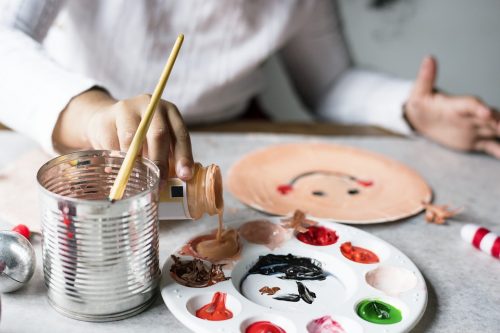
Source: pixabay.com
How Art Therapy Works
Art therapy focuses on our positive emotions where we tend to express our feeling through the use of different types of mediums. The images and colors we use in our drawings or paintings somehow represent a different meaning that is sometimes a product of our current or past situations. We tend to produce a hidden masterpiece using our subconscious mind, and that’s because our brain somehow tells us that we should create a piece of art not from a particular idea but rather out of our feelings. Those images soon represent our desire, hope, and dreams as well as our burden, fear, and pain gathered from our life experiences. pain gathered from our life experiences. “[I]t involves the application of a purposeful, meaningful art-based intervention in contrast to an art activity or art ‘project’,” says Cathy Malchiodi, Ph.D., LPCC.
Indulging in arts promotes personal progress which is beneficial when it comes to fighting depression and other mental illnesses. It releases a compelling balance in our human capacity for us to be able to recognize our capabilities in handling emotional and psychological trauma. It allows us to put our dilemmas into visual representation so we can learn to accept and understand the process of recovery to cope up with such devastating circumstances.
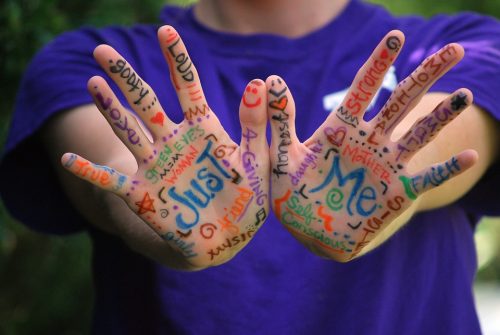
Source: pixabay.com
How Art Therapy Influences A Person
The opportunity of knowing our capabilities is essential when it comes to the conception of a product out of creativity and artistic skill. The creation of shapes, colors, volumes, and other marks in our masterpiece is somehow related to our emotional and psychological understanding. Art therapy helps us to determine that there are things that belong to us and there are those that do not. Hence, it gives us a clear view of what types of factors are useful in our life when it comes to decision making, social interaction, and personality development. Art influences us to discover certain parts of ourselves that we already have that we never seem to give importance to.
A toxic relationship causes severe types of stress and depression. Sometimes, it even puts us in a situation where we think that everything around us is pressuring us to become a better person. Learning art is an excellent way to express ourselves, explore our emotions, develop our self-awareness, improve social skills, and even resolve emotional distraught.
Another effective and convenient way to keep your mental health at bay is by talking to a therapist online through BetterHelp, where you can get in touch with someone at the comfort of your own home – 24/7. To learn more about it, watch these videos of client success stories, or read reviews from employees themselves on how they feel about working to provide healing.
Benefits Of Arts In Personal Development And How It Contributes To Your Relationship
November 22, 2019
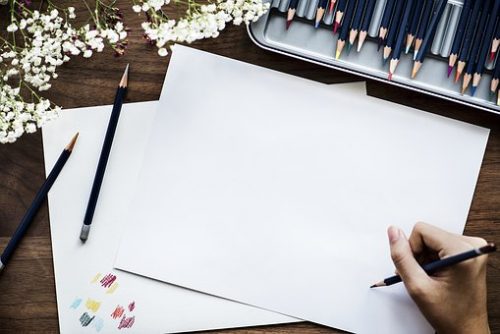
Source: pixabay.com
You may be aware of the benefits of art in your life because it allows you to have a better understanding of your potential skills when it comes to imagination and creativity. Art gives you a strong sense of self-worth which is essential in dealing with life stressors. Also, it helps in formulating your mental, physical, and emotional aspect with the help of different types of skills that are somehow applicable in handling your relationship.
Accountability – Art promotes accountability where you tend to become responsible for your actions towards your production. You tend to value the hierarchy of applicable rules that are applied in your composition, modeling, drawing, and painting. Your learning towards self-accountability is useful in making the right decisions in your life and social interactions as well.
Perseverance – You attitude towards doing something out of the ordinary is one of the main factors of art. And when it comes to your relationship, the building of your motivation to continuously exert an effort despite difficulties and failure is something that you can learn to recognize. Having a goal to accomplish will give you enough reason to continue doing what you’re supposed to do. “Some individuals thrive when things aren’t going their way. It’s almost as if they view each new task they undertake as a test of their mental and physical stamina. When the average person would become bored, frustrated, disappointed or some combination of the above, the highly persevering people among us never flag in their enthusiasm or effort,” writes Susan Krauss Whitbourne, Ph.D.
Collaboration – The process of art is open to collaboration of ideas, and when it comes to your relationship, you tend to share your thoughts and opinions positively. It helps both you and your partner to get amazing results from understanding the different point of views that are beneficial in sustaining a good working bond.

Source: pixabay.com
Dedication – When you value art, you tend to have a dedication to everything you do. Same goes in your relationship because you tend to emphasize the things that matter to you and your significant other. You become dedicated to a specific idea of keeping what you already have and continue doing the things you already started. “Only by being completely dedicated to your direction and decision will you ensure that you have the motivation you will need to achieve your change goals,” writes Jim Taylor, Ph.D.
Problem Solving – Like your relationship, art promotes critical thinking and problem-solving. Every decision is significant because it creates a small to massive impact on your masterpiece. It will cost you an ample amount of effort, time, and strength that are extremely important in the culture of clarity and positivity.
Receiving Feedback – Art values constructive criticism because it helps in improving certain skills and abilities. It somehow applies to your relationship because you tend to value other people’s opinion towards your action. It helps in the way of developing open-mindedness and acceptance towards your significant other.
Confidence – Art is a great way of boosting your self-confidence. It allows you to bring out the best in your personality. It is essential to a relationship because it provides an excellent source of encouragement to improve your potentials and strength. “Self-confidence doesn’t mean you won’t sometimes fail. But you’ll know you can handle challenges and not be crippled by them,” writes Barbara Markway, Ph.D.
Non-Verbal Communication – Art is something that doesn’t require verbal communication because it sends out a message through expression and visual representation. As for your relationship, gestures and chemistry are the essential determining factor that you and your partner are already communicating towards each other.
Focus – Your ability to think and respond to your ideas and emotions are the typical signs of creativity. Therefore, art is a gateway to your learning, perception, memory, reasoning, and problem-solving. It is essential in building your relationship as well because it allows you to avoid distractions coming from pressuring scenarios and instances.
Creativity – The formulation of the unique connection between two unrelated ideas is what art is all about. Same goes for your relationship because the disparate personalities of you and your partner are crucial in sustaining a good romantic relationship. Therefore, your ability to see even one connection to the distinction of your characters is more than powerful enough to maintain a working bond.
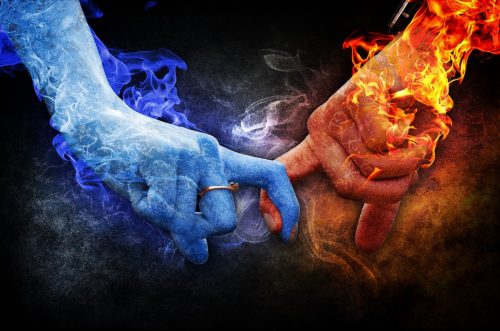
Source: pixabay.com
Art is a very effectual tool in improving our mental, emotional, and psychological state. It doesn’t only make us apply its rules to our relationship situation, but it also allows us to value our worth and capabilities.
How Can Art Help In Psychological Reform Concerning A Broken Marriage?
November 15, 2019
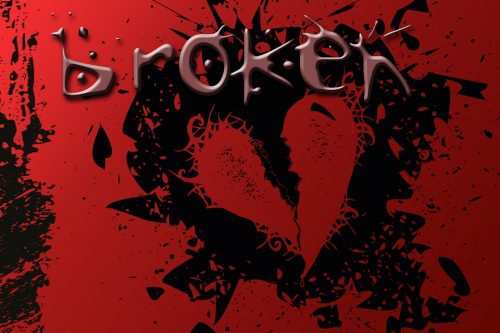
Source: pixabay.com
There are various causes of mental illness that a person can get after a traumatic experience from a broken marriage and each one of them requires tons of variety of treatments. The healing procedure varies depending on the severity of the case of the psychological condition and the capability of the person to address his situation. Though some may take it to a maximum level of psychotherapy, there’s also the easiest way to help them recover, and that’s with the use of art.
What Is Art Therapy?
Art therapy focuses on the facilitation of enabling a person’s meaningful life through the use of several artistic ways. It uses a wide variety of sources and techniques that pay attention to both the procedure and result of a masterpiece from a person’s point of view, emotions, and thoughts. Art therapy uses art media that helps a person create a reflection of their emotional and psychological state. Some examples of artistic activities that people often use are writing, playing musical instruments, drawing, sculpturing, and the list goes on.
“It is a dynamic, integrative approach to treatment that capitalizes on the expressive component of art-making as a central factor in supporting health and well-being,” writes Cathy Malchiodi, PhD, LPCC, LPAT, ATR-BC, REAT.
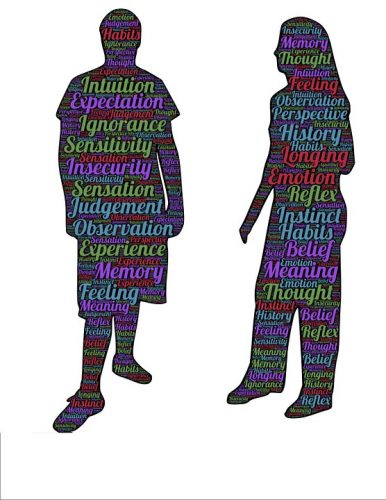
Source: pixabay.com
How Can Art Therapy Help A Person?
The process of art therapy helps a person in most significant ways. It pays attention to the individual’s creativity that is somehow useful in dealing with stress and anxiety. It promotes a healthier brain function due to the development of psychological ability. It encourages the development of psychological strength by transferring thoughts and ideas into different forms, movements, and colors that are available for visual purposes. Also, an individual that undergoes art therapy attains improving products of his personality, ability, interests, and skills.
“Creativity of all types is a premier form of psychological adaptation, the effect of a healthy muse because it involves the ability to change and improve all features of the environment,” writes Albert Rothenberg, M.D.
Why Is Art Therapy Beneficial?
Art therapy is beneficial because it does not only support a healthier normal brain function but also enhances emotional strength as well. It gives a person a list of development regarding his emotional response that is useful in handling critical situations. In fact, art improves a person’s mental skills that can help in making better and lasting positive decisions that he can use in stressful events. A person who loves art tends to become more aware of his thoughts and increase his self-esteem. In line with that, the process helps in managing his behavior and enhances his ability to solve problems using critical judgment. Aside from that, art is said to reduce stress levels and aids a person to interact with reality.
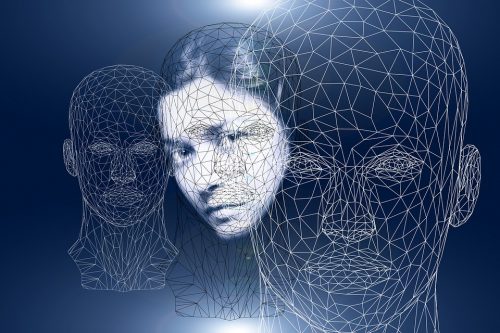
Source: pixabay.com
How Important Is Art In Psychotherapy?
Art is essential in the process of psychotherapy because it helps in stimulating a person’s brain function. It serves as a representation of his emotion and perception from life experience. The images and colors represent a deep meaning that somehow shows happiness, sorrow, and pain over a constant psychological and emotional struggle.
“Expressive artistic activities have a useful role in psychiatric rehabilitation as leisure and occupational skills,” says William Spaulding, Ph.D. “Although specific interventions have not been evaluated in controlled clinical trials, it is clear that having such skills is an important factor in recovery.”
Dealing with a traumatic event in life – especially when it comes to marital problems – is crucial and the least that a person can do is look on its brighter side. Learning art is a great way to help them fight stress and depression that goes along with the reality of a broken relationship.
However, sometimes, even art and other self-help attempts do not hasten the healing. If you are still struggling with depression, anxiety, and other mental health concerns because of broken marriage, seek guidance and enlightenment from an expert at BetterHelp. He will walk you through some efficient steps on how to deal with your mental and emotional struggles gradually but surely. And getting connected is easy, as you can do it right from the comfort of your own home. Visit the BetterHelp site today!
My Wife’s Depression Written In A Journal
November 8, 2019
My wife and I have been married for almost eight years already, and I must admit, it was never a type of smooth relationship. Our relationship suffered from different ups and downs that sometimes made us hurt each other emotionally and mentally. Though the process of our marriage didn’t somehow end up in the grave, I can honestly say that it was a compilation of unpredictable and exhausting moments of our married life.

Source: pixabay.com
My Wife And Her Depression
There was a time that my wife and I were about to call it quits. We filed for divorce and thought about not seeing each other anymore. Even though we knew it could break our family, we made sure that there were no regrets once we decided to end the marriage. However, due to her mental condition where she developed a severe case of depression, we both agreed to step back with our irrational decisions and gave our marriage another try.
“People who undergo divorce face a variety of psychological issues including increased stress, lower life satisfaction, depression, increased medical visits, and an overall increase in mortality risk compared to those who remain married,” writes Romeo Vitelli, Ph.D.
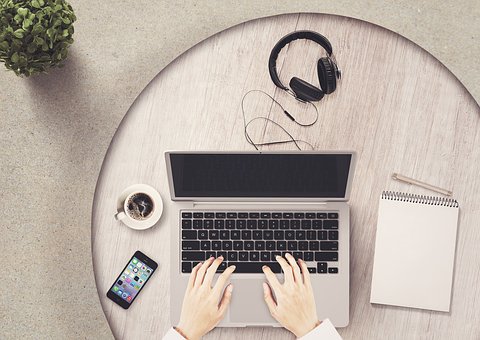
Source: pixabay.com
The Sacrifices Made To Save Our Marriage
It was a particular moment that we knew things would never be the same. However, we tried to talk about the things that made us both think about our relationship. From there, we agreed to make amendments to the kind of response we should give to each other so we would be able to sustain the respect we both needed. We paid attention to the essential things that we needed to be able to stay together reasonably.
The Intervention
I knew that my wife was suffering from depression, but I somehow noticed little changes regarding her behavior. She became a positive thinker and started to affect me as well as our relationship. She managed to overcome her anxiety and stress from the past, and that was something that I never thought could happen in a short span of time. She became a different person who thought about the good side of life and aimed to have a better future.
“The positive emotions we get from the change get less and less frequent each time,” says Sonja Lyubomirsky, PhD, a social psychologist at the University of California, Riverside, and author of the 2013 book The Myths of Happiness. “If you open yourself up to new opportunities and potential surprises with your partner, then that can slow down adaptation.”
The Help Of Her Journal
“When we write things down, they feel more manageable,” shares clinical psychologist Perpetua Neo, PhD. “Writing helps get things into perspective and puts a damper on feelings of worthlessness. It brings me back to reality.”
All those changes that I noticed with my wife were all because of her journal. I figured out that whenever she writes her struggles and worries in life, it somehow helped her to become emotionally strong. Writing became her coping mechanism to heal herself from frustrations from our poor relationship. In some instances, it helped her gain improved decision-making skills and made her a better planner. She even started to have more confidence and became a better person, one I never thought she would become. She became creative, adaptive, and happy. My wife also enhanced her communication skills due to the art of writing, and that perfectly made me so proud of her.

Source: pixabay.com
I admit that our marital issues were once out of hand and my wife’s depression was the turning point of our marriage. However, my wife’s journal was the only thing that made me realize how powerful the art of writing can be. It didn’t just save my wife from her mental condition but also gave us a chance to save our marriage.